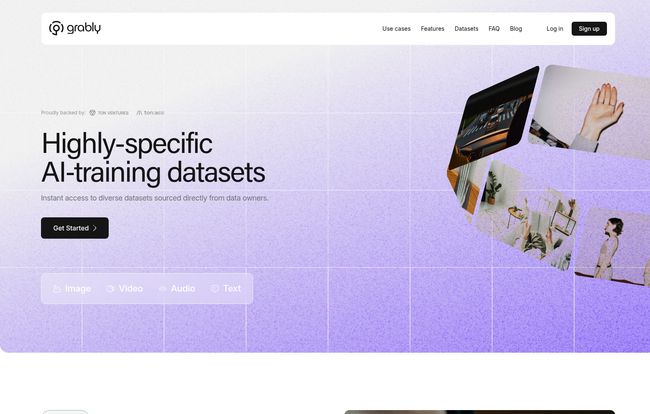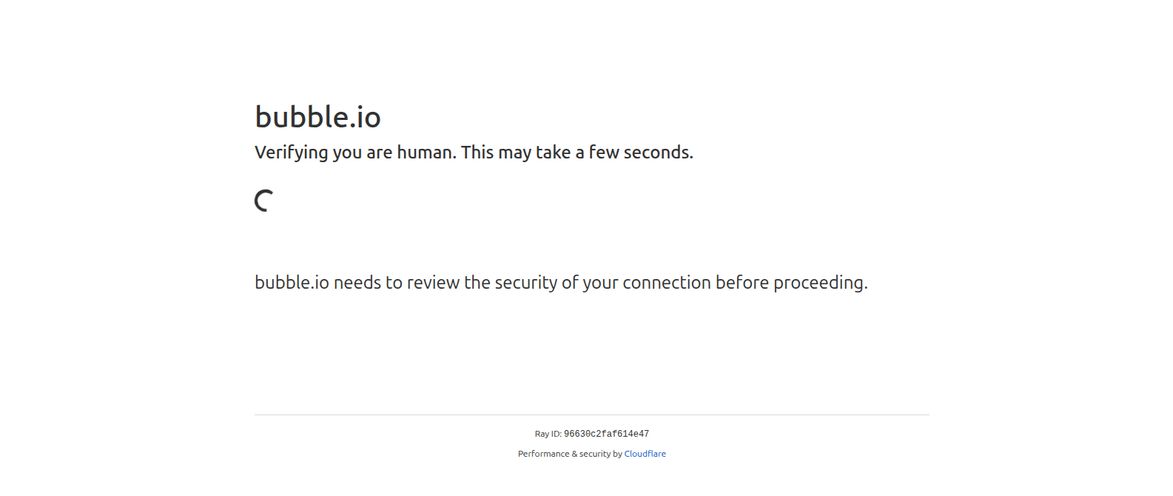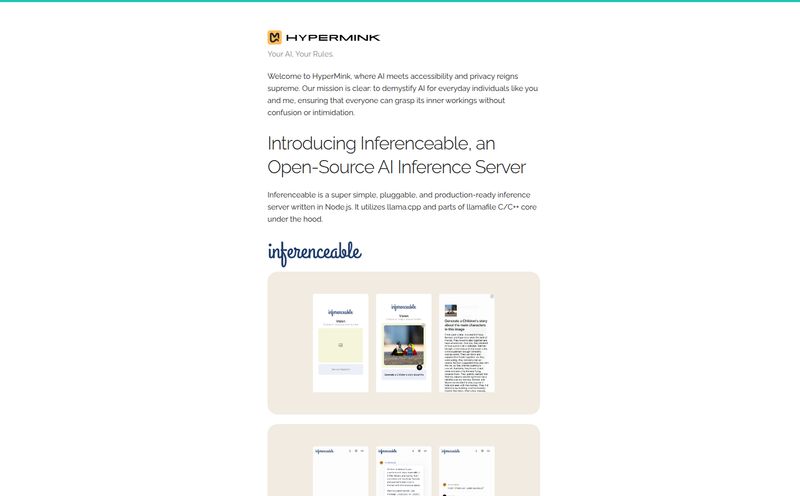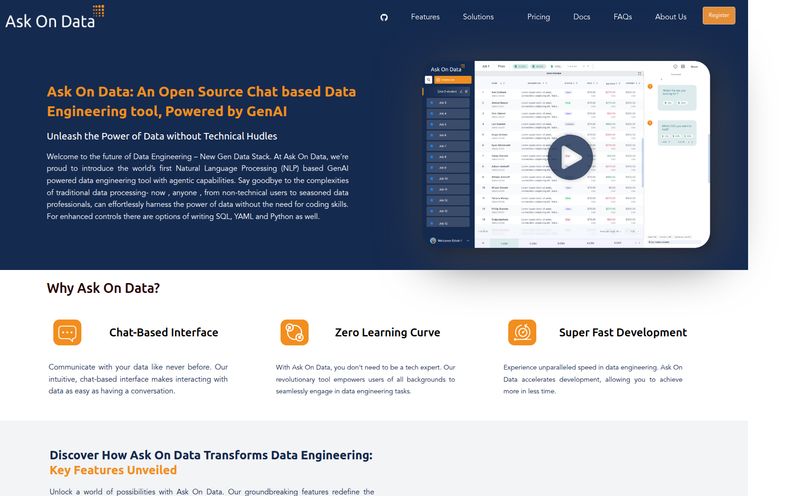For the last decade, we’ve all been part of a lopsided deal. We hand over our photos, our search histories, our late-night food orders—our digital breadcrumbs—to tech giants in exchange for “free” services. They get to build multi-trillion dollar empires on our data, and we get… cat videos and birthday reminders. It’s felt a bit like digital sharecropping, hasn't it?
I’ve been in the SEO and digital trends game for a long time, and I’ve watched the insatiable hunger for data grow into an absolute frenzy with the rise of AI. Every AI model, from ChatGPT to Midjourney, is starving for high-quality information to learn from. This has created a modern-day gold rush, but this time, the gold is us. It's our data.
So when I stumbled upon a platform called Grably, my professional curiosity was definitely piqued. Their pitch is simple and, frankly, a little disruptive: What if, instead of giving your data away, you could sell it directly to AI companies, safely and on your own terms? An interesting proposition. So, I did what I do best: I dug in.
So, What's the Deal with Grably?
At its heart, Grably is a marketplace. Think of it like a specialized broker connecting two very different groups. On one side, you have regular people—you, me, your cousin who takes a thousand pictures of his dog. On the other, you have AI companies that need specific, high-quality datasets to train their algorithms. Grably’s job is to be the bouncer and the banker, ensuring the data is properly consented to and that the owners get paid for it.
They aren’t just asking for your random camera roll, either. The platform is designed to handle all sorts of stuff: multimodal data (which is a fancy way of saying images, text, and sound together), biometric data like hand and palm images, and even documents. The idea is to provide the very specific, often hard-to-find data that AI needs to get smarter about the real world.
The Big Question: Why Would You Even Sell Your Data?
I can hear you now. “Sell my personal data? Are you crazy?” And that’s the first, most important hurdle to get over. The gut reaction is to guard our privacy with our lives. But here’s a thought I've been wrestling with: we’re already giving it away. The difference here is the promise of consent and compensation.
Grably’s entire model is built on being what they call “user-consented.” You actively choose to connect a folder or an album, see what it might be worth, and agree to the transaction. It's a world away from the murky terms of service agreements we all scroll past and click “Agree” on without reading. It's about shifting from being the product to being the supplier. A subtle but powerful change in perspective.

Visit Grably
This isn't about selling your soul for a few bucks. It's about recognizing that your data has value and deciding if you want a piece of the action. For some, the answer will always be a hard no, and I totally respect that. But for others, it might feel like a pragmatic way to participate in the AI revolution instead of just being fuel for it.
A Peek Inside the AI Data Store
When you browse the datasets on Grably's site, you quickly realize this is not your average stock photo library. This is serious, granular stuff for training sophisticated AI. I’m seeing things like:
- Multi-pose facial recognition: Datasets with hundreds of thousands of files to help AI understand faces from different angles.
- Indoor Object Segmentation: Helping an AI tell the difference between a sofa, a lamp, and a coffee table in a picture.
- Human Body Parts: Extremely specific images, like 200,000+ pictures of just ears. Yes, ears.
- Person Home Activity: To train AI that might one day help with elder care or home automation.
The specificity is what’s valuable. An AI company building a skin cancer detection app can't just scrape random beach photos from Instagram. They need clear, consented images of skin, and Grably is positioning itself as the ethical place to get them. It’s a smart move, targeting a real pain point for developers.
The Monetization Angle for Regular Folks
Okay, let's talk money. The process for a data owner is straightforward. You connect a source, like a photo album or a folder of documents, and Grably analyzes it to give you a potential earnings estimate. But let's manage expectations here. You're probably not going to buy a yacht selling pictures of your lunch.
The earnings are entirely dependent on what AI companies need right now. A folder of 1,000 unique images of traffic intersections might be worth more than 50,000 beautiful but generic sunset photos. It's a market, and value is dictated by demand. This is one of the tricky parts—the lack of a clear price list means you're putting your data out there and waiting for a bite. It’s a bit of a black box, which could be a point of friction for some users.
What's In It for the AI Companies?
For AI developers, a service like Grably is a massive sigh of relief. The old way of getting data—scraping it from the web—is a legal and ethical minefield. You risk violating copyright, angering users, and poisoning your AI with biased, low-quality junk. I’ve seen projects get derailed because their foundational data was a mess.
Grably offers a cleaner path. They emphasize a few key benefits for their clients:
- Quality: Because the data comes directly from the source, it's often much higher resolution and more accurate than scraped content.
- Compliance: This is huge. They claim adherence to global privacy rules like GDPR in Europe and CCPA in California. This saves companies from massive legal headaches and fines.
- Scalability: Need to go from a 100,000-image dataset to a million? They are built to handle that, providing a consistent and scalable source.
Honestly, the compliance piece alone is a powerful selling point. Navigating data privacy law is a full-time job, and outsourcing that risk is very appealing.
The Price of Data
If you're an AI company looking to buy, you won't find a simple pricing page on Grably. This isn't surprising. In the world of enterprise data sales, everything is custom. The price for a dataset of 200,000 ear photos for a medical tech startup will be completely different from a dataset of traffic scenes for an autonomous driving company. The cost depends on the size, specificity, exclusivity, and intended use of the data. It's a high-touch, "contact us for a quote" model, which makes perfect sense for the kind of B2B transactions they're facilitating.
The Good, The Bad, and The Murky
So, where do I land on Grably? It’s complicated, as all interesting things are. On one hand, I genuinely applaud the mission. Creating a transparent and ethical framework for the data economy is a noble goal. It empowers individuals and provides a much-needed service for developers trying to build the future responsibly. The focus on quality and compliance is spot-on.
On the other hand, there's an inherent nervousness that comes with willingly handing over personal data, even for payment. How is my data's value really calculated? What happens if the company buying my data gets acquired by a less-scrupulous entity? While Grably is compliant, the model requires a significant amount of trust from its users. The value proposition is clear, but the long-term implications are still unfolding. It feels like a step in the right direction, but we're still in the early days of this new data frontier.
Frequently Asked Questions About Grably
Is Grably safe and legitimate?
From all appearances, yes. Grably operates as a legitimate business focused on ethical data sourcing. They emphasize compliance with major privacy regulations like GDPR and CCPA, which suggests a serious approach to security and user rights. However, like any platform dealing with personal data, users should always exercise caution and understand what they are sharing.
How much money can I actually make by selling my data?
This is the million-dollar question with no simple answer. Your earnings depend entirely on market demand. If you have a large collection of unique, high-quality data that an AI company desperately needs, you could do well. If your data is more common, you might earn very little. It's best to view it as a potential source of passive income rather than a primary salary.
What specific types of data are in high demand?
The demand is for highly specific datasets needed for niche AI training. Based on their site, this includes things like diverse facial images, photos of specific objects from multiple angles (like cars or furniture), images of human activities, and even biometric data like handprints or iris scans, all with clear consent.
Who is buying the data?
The customers are AI companies and research institutions. These could be anyone from a small startup developing a new photo app to a large corporation training a model for medical diagnostics or a university research team studying machine vision.
Is this any different from how Google or Meta use my data?
Yes, and the difference is key. With most big tech platforms, you provide data implicitly as a condition of using a "free" service, with little transparency or direct payment. With Grably, the process is explicit. You are a willing seller in a direct transaction; you are consciously choosing to monetize a specific set of data for a specific purpose.
How does Grably handle privacy?
Grably's model is built on user consent and compliance with privacy laws. This means they should have clear terms about how your data is used, who it's sold to, and for what purpose. The data is meant to be anonymized or used in a way that respects the owner's privacy within the bounds of the agreement.
Final Thoughts: A Cautiously Optimistic Verdict
Grably is one of the most interesting plays I’ve seen in the data space in a while. It’s an attempt to build a more equitable and transparent system in an industry that has historically been anything but. It won’t be for everyone, and the privacy questions are real and should be taken seriously.
But it represents a future where we are no longer just passive sources of raw material for Big Tech. Maybe, just maybe, we can become active participants, partners even, in the creation of the next wave of technology. It's a bold idea, and I'll be watching very, very closely to see how it pans out.
Reference and Sources
- Grably Official Website
- Official Information on the General Data Protection Regulation (GDPR)
- Official Information on the California Consumer Privacy Act (CCPA)



